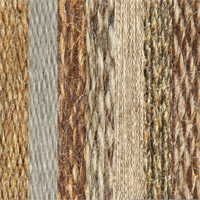Wool has always been a winter favourite. The ponchos, sweaters and the scarves can completely change the entire look of the dress or the attire one is wearing. Wool ignites at a higher temperature than cotton and some synthetic fibres. Wool’s inherent resistance to flame and heat make it one of the safest of all upholstery fibres.
Let’s look at the most commonly used wool :
- Cashmere wool is obtained from the goats. It’s famous in many countries by the name “cashmere” which is derived from the state of “Kashmir” in India. Cashmere is fine in texture, strong, light, and soft. Garments made from it provide excellent insulation. Famous shawls are the jamavar with the famous paisley pattern.
- The Angora wool is obtained from the Angora rabbits. Angora is known for its softness, thin fibres, and its silky texture. Angora wool is commonly used in apparel such as sweaters and suits, knitting yarn, and felting. The fibre is normally blended with wool to give the yarn elasticity, as Angora fibre is not naturally elastic.
- Mohair Wool, is silk-like fabric or yarn made. Angora goats give out this type of wool on rearing. Mohair wool is known to have high lustre and sheen. It is durable, naturally elastic, flame resistant, crease resistant, and does not felt. It is considered to be a luxury fibre, like cashmere, angora and silk, and is usually more expensive than most wool that comes from sheep. Mohair is used in scarves, winter hats, suits, sweaters, coats, socks and home furnishing.
- Quivit wool is the wool of the muskox. It is valued for its use as a fibre as, unlike sheep‘s wool, it does not shrink in water at any temperature. It is most commonly used for hats and scarves, and is among the softest wools. It is very expensive but it is also durable and lasts for years with good care. Qiviut is stronger and eight times warmer than sheep’s wool and softer than cashmere wool.
Quite a wool story.









